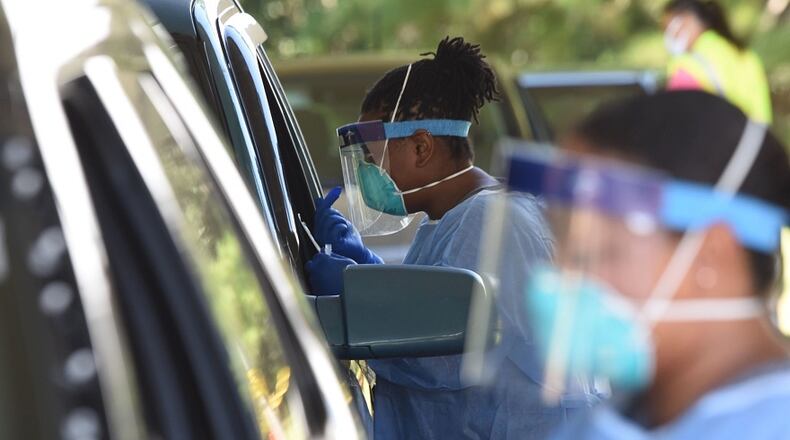New charts and a map posted to The Atlanta Journal-Constitution’s COVID-19 data dashboard help readers understand the impact of Georgia’s efforts to curb the spread of the virus.
The visualizations show total cases of the coronavirus by ZIP code, newly-reported hospitalizations, and the share of tests to diagnose COVID-19 that come back positive.
Epidemiologists use this last measure, often called positivity or percent positive, to help them identify whether a jurisdiction is testing enough people to understand how many people have the disease.
When a disease is as widespread as COVID-19 is, simply counting the number of tests may not give enough information, said Ben Lopman, a professor of epidemiology and environmental health at Emory University’s Rollins School of Public Health.
“We want the percent positive to be as low as possible,” said Lopman. “If we’re testing a lot of people, if there’s a sufficient amount of testing, then the proportion will be low.”
The percent who test positive can reveal if an increase in a state’s count of new cases is the result of increased spread of the virus or more testing. Georgia has been criticized repeatedly for failing to test enough people to get COVID-19 under control.
Positivity has also become crucial as states reopen businesses and schools. The World Health Organization advises that before reopening, positivity should remain at or below 5% for 14 days. Otherwise reopening could trigger an outbreak that overwhelms contract tracing and other efforts to contain the disease.
Georgia’s current positivity stands at 11.0% as of Wednesday. This rate is among the highest in the nation, according to an analysis by Johns Hopkins University.
The AJC’s visualizations are based on data released by the Georgia Department of Public Health, the Georgia Emergency Management and Homeland Security Agency, and local health departments.
While these agencies release much of this data publicly, their daily status reports often do not display them in a way that illustrates trends over time. State agencies also do not post data for areas smaller than counties in their daily updates.
One new chart on the AJC’s data dashboard gives daily counts of newly reported hospital cases for COVID-19 in Georgia. This reflects the number of people who are severely ill and is an indicator of how hospital resources are being taken up, Lopman said.
A new map on the AJC dashboard illustrates cumulative cases of the disease and their prevalence in certain metro Atlanta ZIP codes. It is based on data that the AJC collects from Clayton, Cobb, DeKalb, Douglas, Fulton, Gwinnett, Newton, and Rockdale counties, and recent U.S. Census population figures.
The map excludes some ZIP codes because of insufficient data.
About the Author
The Latest
Featured



